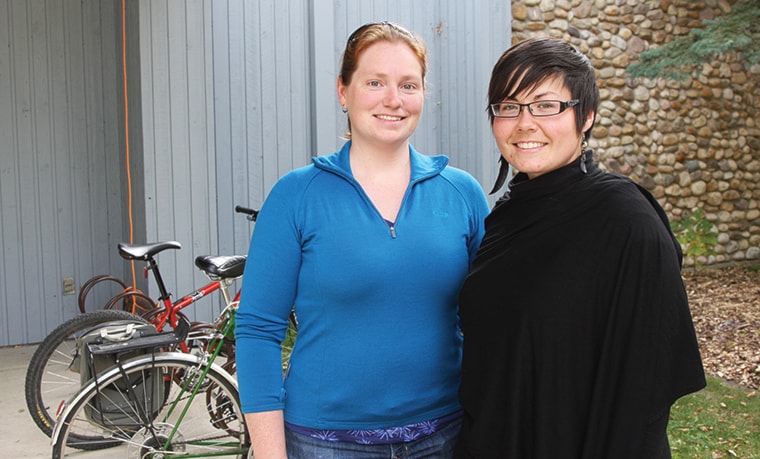Commuter cyclists could seek partnerships with health and wellness groups to change the perception among many Alberta motorists that roads are solely for cars.
“It’s not all about cycling. It’s about having happy, healthy communities,” said Sarah Harold, a co-organizer of the Alberta Bicycle Commuter Conference that took place at the Kerry Wood Nature Centre this weekend.
Panelists from Lethbridge, Olds, Calgary, Edmonton and Red Deer brainstormed for positive ideas on Saturday about how to change negative opinions about bicycle commuting.
A popular suggestion was to seek support from educational, or health and wellness groups — even the Alberta Motor Association — to get across the message that sharing the road has many gains.
These include ecological and health benefits. Harold said improved air quality, higher fitness levels and lower health care costs all come with bike commuting.
The 25-year-old, who recently moved to Edmonton from Canmore, estimated she does 75 per cent of her inner-city travel by bicycle.
This means exercise is automatically built into her day and she’s rarely stuck in traffic.
Harold is also a user of public transit, often taking her bicycle onto the bus or LRT for part of a trip across town.
Another conference co-organizer, Bernadette Blakey, a Red Deer native who now lives and works in Edmonton, said she only stops cycling with studded winter tires when it gets colder than -20 C.
“I enjoy it, and I find my ride to work is the same length as a bus ride.”
Edmonton is becoming more of a cycling city, with 450 riders counted passing the south end of the High Level Bridge between 8 and 9 a.m. one morning this summer, said Harold.
Alberta’s capital has also installed bike lanes — but at a slower pace than Red Deer and with more community involvement. “It took two to three years of planning and public consultation,” said Blakey.
She noted Edmonton residents were informed in advance that bike lanes would be painted onto their streets by posted public notices. When there was loud opposition from one neighbourhood, the bike lanes were delayed until problems could be worked out.
Blakey and Harold believes a longer implementation period, with more public consultation, might have prevented some of the public resistance to bike lanes in Red Deer, where it’s become an election issue for some people.
Besides promoting education, advocacy and infrastructure for cycling, one of the weekend conference’s goals was to exchange ideas about bike commuting between different communities. “We want to take things that worked in Edmonton to Red Deer, and things that worked in Red Deer to Olds,” said Blakey.
lmichelin@www.reddeeradvocate.com
